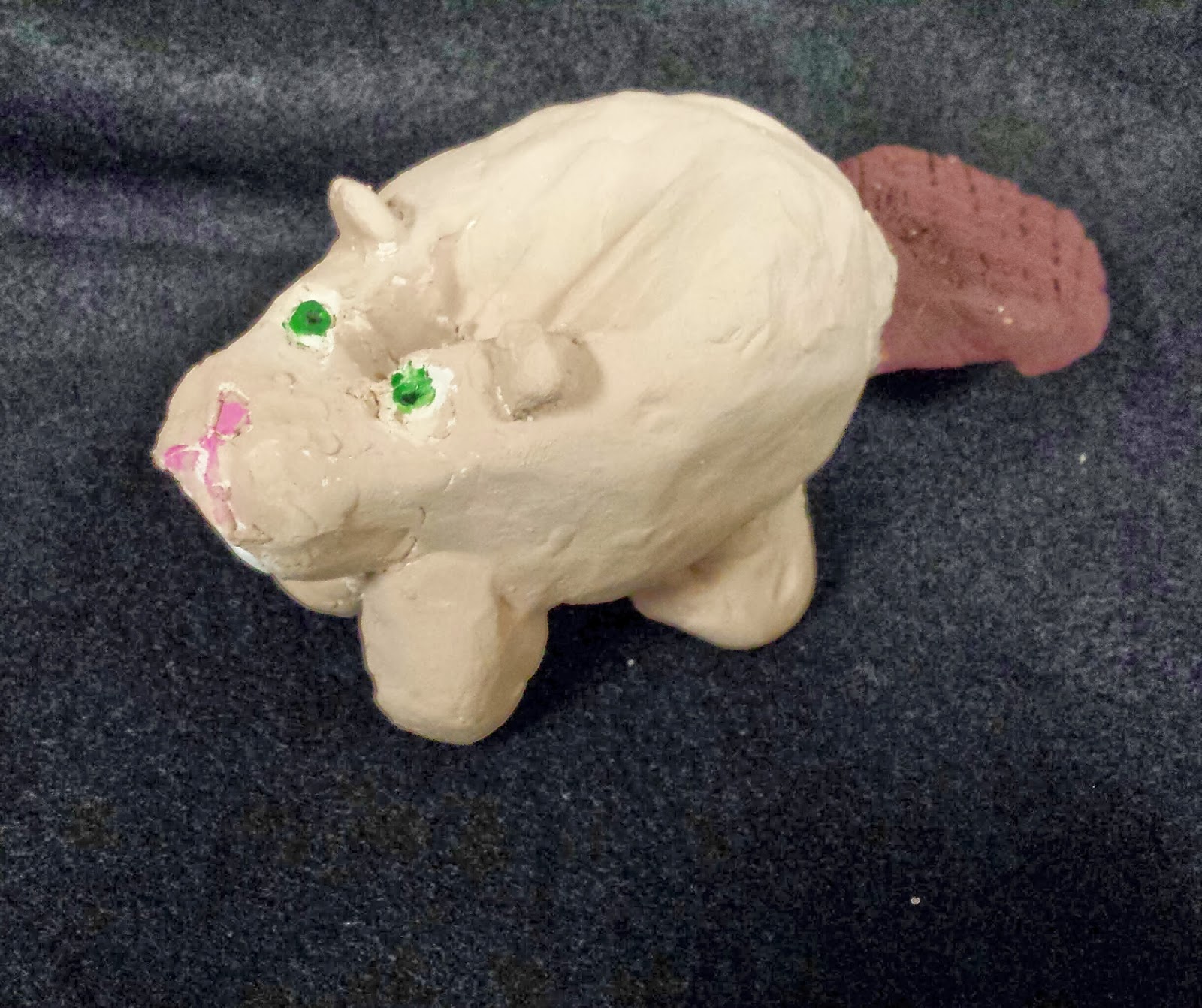3 Class Periods
 |
| Burch Clay Cats, Third Grade Art Lesson |
Day 1:
Students completed this task through follow along demonstation.
1. Roll a slab out of clay. You want the slab to be "pancake thick."
2. Wrap the slab around a paper cup.
3. Squeeze the clay near the top of the cup to create the cat's head.
4. Smooth out clay with a little water. Watch out for MUD. (Too much water will make the clay hard to work with).
5. Pinch out the ears.
6. Roll coils to create the tail and legs. Legs can also be drawn on. Discuss slip and score technique with students. (For this age in my curriculum this is review vocabulary).
 |
| Pinching ears and adding tail. |
7. Details were added to the cat (Burch "eyes, nose, swoop," holes for the whiskers and designs for the body). I had different items out to create the patterns on the body (lego pieces, plastic canvas, buttons, shells, etc.)
8. Remove the cup. Scratch name and class code inside the cat's body.
 |
| Cats drying for the kiln. |
Day 2:
This is the youngest age that I have glazed with students at the elementary school. We discussed what glaze is made of, what happens to it when it is fired, and how expensive it is for an art room supply.
For this part of the lesson I only have 5 colors for the students to choose from. They are instructed to pick one color to completely glaze their cats with. We use this as our base color for this piece. Students work in groups. The color selected determines who is in each group.
Students glaze their piece with two coats. Students are careful not to get any glaze on the bottom of their sculptures.
Day 3:
On this day students are allowed to use as many colors of glaze that they would like. They can paint on designs of their own or paint in the designs they pressed into the clay on day 1 of this lesson.
For this to work, I have smaller containers of glaze all ready to go and set up on a counter in my room. Each container is labeled with a the name of the glaze and a photograph of what the glaze looks like when fired. Students are to take a new brush every time they change to a new color. Dirty brushes are placed in water buckets at their work stations. This is the first year I used this system. It works really well and I definitely will be using it again for my future lessons with glaze.
Complete glazed pieces are fired and wire whiskers are added with a hot glue gun.
Examples of Student Work:























































